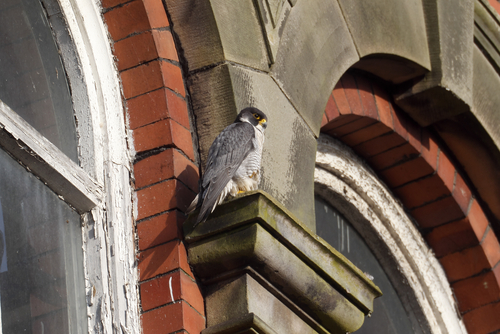Urban Living

Ed Drewitt explains how once rare peregrines are taking advantage of urban buildings and light pollution to dine out in Britain’s towns and cities
The Biologist Vol 62(1) p20-24
If you work in a multi-storey office building or laboratory, the chances are you’ve looked out of a window and seen a peregrine flying past at breakneck speed. Once associated with cold, wet, remote crags in Wales and Scotland, where people could only view peregrines from miles away (even with a licence), it is now possible to spot these birds just 20 metres above a city centre. Sometimes the fastest fliers in the world even perch long enough to be photographed.
Thirty years ago no one could have predicted that such a rare bird would become widespread. This large bird of prey, which feeds primarily on other birds, has made a remarkable recovery from near extinction across the UK, caused by the effects of illegal persecution and harmful, now-banned pesticides once used in the British countryside.
As the peregrine has returned to both former rural haunts – in quarries and on remote cliffs – once vacant nest sites are now occupied. Their next step has been to move into urban areas where they appear to be just as at home. Many towns and cities across southern, central and northern Britain now have resident breeding peregrines, with others beginning to creep into the eastern counties.
Peregrines love high rise buildings, bridges, cooling towers, universities, churches and cathedrals. Here, they can safely roost, pluck prey and find somewhere to nest. In some cases, the birds are given a helping hand in the form of a nest box to stop their eggs rolling into gutters, or as mitigation when buildings are knocked down.
Web cameras enable people to watch them from their living room; since 2007, the cameras trained on a pair of peregrines on Derby Cathedral have attracted 2.6 million hits. This increasing presence in urban areas has provided excellent opportunities to study the peregrine in ever greater detail, revealing behaviours and habits never previously recorded.
Want to continue reading this article?
Click to login.


